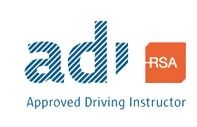Day of the driving Test
You should receive a letter or email from the Department of the Environment notifying you of your test date. You will receive the appointment notice four or five weeks in advance of your test.
The letter/email will indicate the time, date and venue for the test together with conditions, which must be met. It will also set out the arrangements for cancelling your appointment should this prove necessary. On the day of the test, go to the allocated test centre 15 minutes before test appointment. The examiner will call out your name, once inside the office you will be asked to sign that you are insured in the vehicle been used on the test and they will check your learner permit to ensure that it relates to you and also;
- Is current and is for the correct category of vehicle
-
The tester will then ask some questions on the rules of the road and road signs
-
After this the candidate is escorted to the car
-
Then the tester usually ask the candidate to open the bonnetUnder the bonnet the candidate will be asked to point out some of the items which need regular checks and maintenance
1. Reservoir for brake fluid
2. Steering fluid reservoir
3. Coolant and window washer reservoir
4. The location of the engine oil filler cap
5. Location of the dipstick and how to check levels.
-
Then the candidate is asked to sit into the car
-
Once you're in the car the tester will check your indicators and brake lights are working (if any of these lights are not working the test will not go ahead and you will lose your driving test fee paid)
-
Then the tester will check tax, insurance and NCT if required (cars older the 4 years)
-
They will ask you some secondary controls
-
Knowledge of how do use the following will be asked: parking lights, dip head light, full headlights, hazard lights, fog lights, wipers, horn, demist the back and front windows.
-
The examiner will ask the candidate to follow the directions on where to drive
The driving test is straight forward. For cars it will last about 25- 40 minutes.
The examiner will know that you may be nervous and will try to put you at ease. The examiner is there to test your driving ability and, unlike your instructor, the driver tester will not offer you encouragement or advice.
You should not be put off by this formal approach, which is designed to ensure fairness to all applicants. You will be given clear instructions throughout the test.
Should you not understand a particular instruction, tell the examiner. If you make a mistake, do not worry unduly. It may not be a serious as it appears and may not mean you have failed.
Sometimes a supervisory examiner may accompany the examiner - this is quite normal. Your driving test will be assessed on the following situations:
-
Moving off driving in traffic
-
Stopping
-
Reversing around a corner
-
Turning in the road
-
Starting on a hill
-
Road positioning
-
Overtaking and passing
-
Anticipation and observation
-
Use of mirrors and signal
-
Progress/Speed
-
Compliance with traffic lights, road signs and markings
-
Use of vehicles controls accelerator, clutch, gears, brakes and steering
In the test candidates are allowed some minor mistakes. Mistakes are graded and there are three grades.
GREEN or grade one is very minor and does not affect the outcome of the test.
BLUE or grade two affects the test and if you get 4 marks in the same line or get 6 marks under the same heading or 9 or more over the complete test sheet then this is a fail.The best result is a clean sheet.
RED or grade three is very serious or dangerous and just one of these results in a fail.
"like" us on facebook if you find the information helpfull simply click on the link below
www.facebook.com/Galwaydrivingschool







